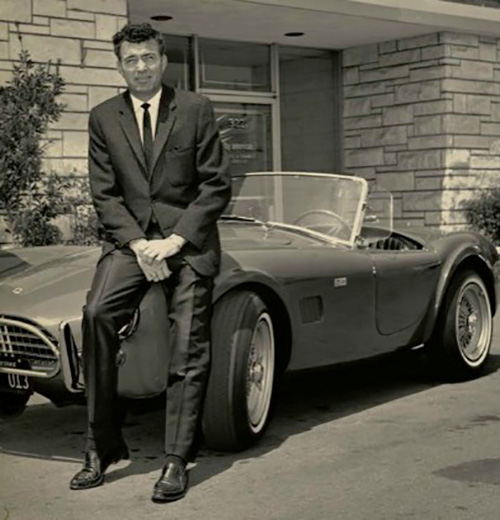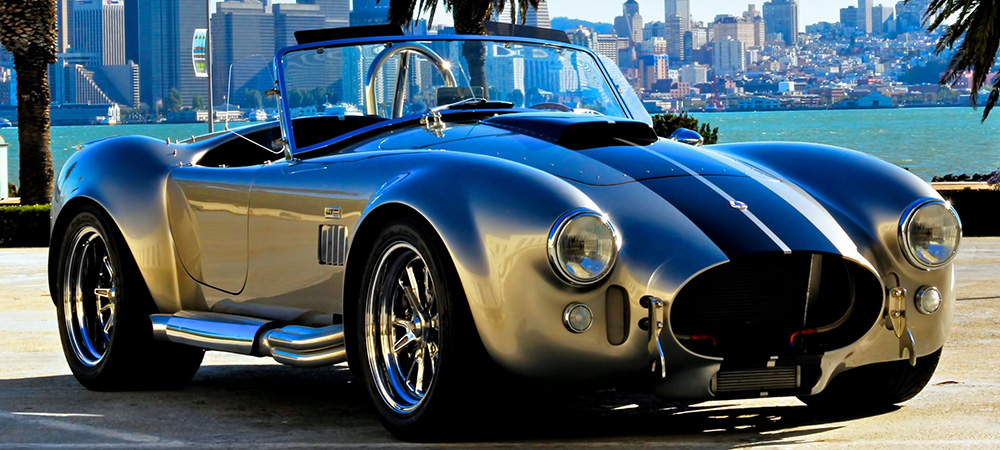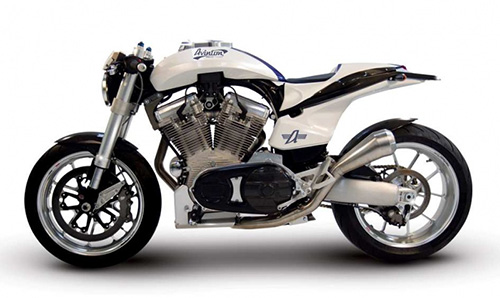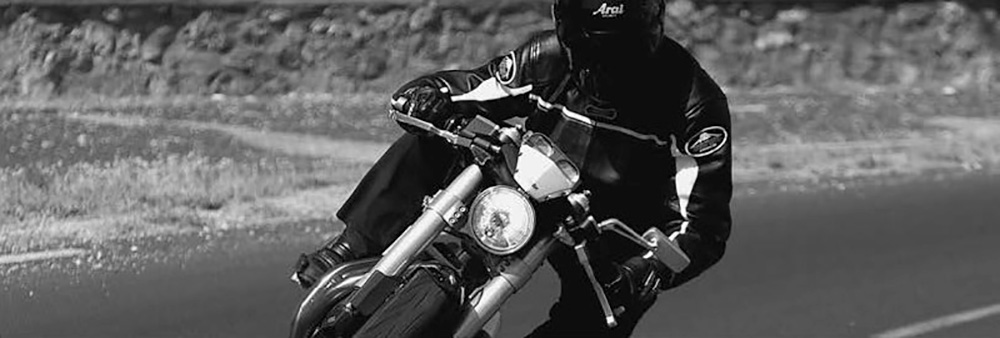
STORY
ブランドの歴史 ― 神話を架け橋として

ウォーレン・ホール・シェルビー
ウォーレン・ホール・シェルビーは、テキサス州リーズバーグの小さな町で郵便配達員として働いていました。彼が慈しみ抱いた新生児が、やがて20世紀を代表する神秘的な自動車を創り上げる存在になるとは想像すらしていなかったでしょう。息子キャロル・シェルビーは若くして労働の世界に入り、トラック運転手、石油掘削作業員、そして養鶏業者として働いた後、ようやく自身の最大の可能性を見出しました。若きシェルビーが道を定めるまでには、幾ばくかの時間を要したのです。
転機は突然訪れました。疫病により飼育していた2万羽の鶏が全滅し、彼は自らの人生の進路を大きく変えざるを得なくなります。29歳のとき、キャロル・シェルビーは自動車レースへの情熱を職業へと昇華させる決意を固めたのです。
卓越した才能を持つシェルビーは瞬く間に注目を集めました。年月を重ねる中で、彼はMG、キャデラック、フェラーリ、マセラティ、そしてアストンマーティンといった名だたるメーカーのマシンを駆り、アメリカやヨーロッパの著名なサーキットを席巻しました。彼のドライバーとしての経歴においてフランスは重要な役割を果たし、初めてフォーミュラ1グランプリに参戦した地でもありました。そして1959年のル・マン24時間耐久レースで、彼は最も輝かしい勝利を手にするのです。
しかしその直後、不運にも心臓の疾患が発覚し、彼はレーシングドライバーとしてのキャリアを断念せざるを得ませんでした。だがテキサスの男はそこで歩みを止めず、新たな挑戦へと乗り出します。それはフェラーリ250 GTOを打ち破るべく、アメリカ製のレーシングカーを開発するという壮大な挑戦でした。
The history of the brand : Bridging the gap through a myth.

Warren Hall Shelby
Warren Hall Shelby was a mailman in the small town of Leesburg, Texas. He must have been far from imagining that the new born child, held lovingly in his arms, would later create the most mystic if cars of the 20th century. Warren’s son joined the workforce at young age as a trucker, then oil driller, and finally as a chicken farmer before realizing his greatest potential. The young Carroll Shelby took a while to find his path.
Opportunity came swiftly after an epidemic whipped out his 20,000 clucking chickens, forcing him to take a sharp turn on the road of his career that would change the history of motor vehicles forever. At 29 years old, Carroll Shelby decided to transform his passion of automobile racing into a vocation.
Extremely gifted, Shelby quickly attracted attention. Over the years he raced for MG, Cadillac, Ferrari, Maserati and Aston Martin on some of the most famous American and European racetracks. France played an important role in his career as a driver where he participated in his first Formula 1 Grand Prix. Additionally he achieved his most impressive victory at the 24 Hours in Le Mans in 1959.
Just after the 24 Hours, unfortunately for the talented Shelby, he was diagnosed with a heart problem that made it impossible for him to continue his career as a driver. The Texan decided to take on a new challenge; that of developing an American race-car capable of dethroning the Ferrari 250 GTO.

伝説の誕生
無敵を誇るイタリア勢に対抗するため、シェルビーが選んだ戦略は「超軽量フレーム」と「大排気量エンジン」の融合でした。さらに彼は低回転域のトルクを重視し、サーキットでの効率性を高めることに成功します。当時のアメリカ車において軽量さは決して常識ではなく、シェルビーは着想を必要としていました。そのインスピレーションを与えたのは、ロンドンの高級街を闊歩する裕福な若者たちのために作られた、英国製の小さく優雅なロードスター「AC ブリストル」でした。
この小さな英国車のシャシーは直径3インチのフレームから成り、極めて頑強で大きなトルクにも耐えられる特異な構造でした。その強靭さを頼りに、シェルビーはブリストルの2リッター直6エンジンを巨大な4.2リッターV8フォード製エンジンへと換装します。劇的に向上した性能は新たな名を必要としました。こうしてAC ブリストルは「AC コブラ」となり、20世紀を象徴する神秘的な存在へと昇華したのです。

The legend was born.
In order to be competitive with the invincible Italian armada, Shelby decided that the best strategy would be to go with the combination of a super light frame with an over sized motor. Most importantly, he incorporated a higher low end torque in order to be more efficient on the race track. Being lightweight wasn’t really the norm as far as American cars were considered during this period. Shelby was in need of inspiration. His inspiration came from an AC Bristol, which was an elegant little British roadster reserved for the spoiled upper class youngsters as they strutted their stuff around London’s high rent districts.
The little English car’s chassis was one of a kind; composed of a 3 inch frame in diameter. Thankfully it was very strong and could handle a large amount of torque, because it wasn’t long before Shelby replaced the Bristols’ nice little 6 cylinder 2 liter with a gigantic 4,2 liter Ford V8! The car’s new performance deserved a new name. Thus the AC Bristol became the AC Cobra, the most mystic car made its way into the 20th century!
コブラの口づけ
1962年にAC コブラ 260が登場すると、その圧倒的な競技成績により瞬く間に世界中のスポットライトを浴びました。有望な成果に後押しされ、シェルビーは限界をさらに押し広げていきます。トレッド幅が拡大するにつれ、エンジンはますます巨大化し、常軌を逸した存在へと進化しました。1963年には4.7リッター、360馬力を誇る「コブラ 289」が誕生。そして1965年には7リッターV8を搭載し485馬力を発揮する「コブラ 427」が登場します。その鍛錬は1966年に頂点へと達し、最も猛毒を帯びた「コブラ 427 スーパー・スネーク」が姿を現しました。車重1050kgにして、7リッターV8・ツインスーパーチャージャーが生み出す800馬力――まさに毒蛇の極致でした。
Kiss of the Cobra.
As soon as it was released in 1962 the AC Cobra 260 shined under the international spotlight thanks to its fantastic results in competitions all over the world. Encouraged by promising results, Shelby continued to push the limits. As the axel width became larger, the motor block became increasingly voluminous and outrageously unreasonable! In 1963, the snake charmer brought the Cobra 289 to life with its 4,7 liters and horsepower of 360. Out came the Cobra 427 in 1965 with a V8 of 7 liters and the horsepower at 485. The bodybuilding session came to a peak in 1966, with the most venomous of Cobras, the Cobra 427 « Super Snake » weighing 1050 kilos, a 7 liter V8 with a double compressor that developed… 800HP!

スタートラインで立ち止まる
1966年から幾年かが過ぎ、舞台は2000年代初頭のフランス南部へと移ります。モンペリエ郊外で、マッスルカーに情熱を注ぐエンジニア兼デザイナーが、現代的なカフェレーサーの試作車を生み出しました。その名は発音困難ながらも独創的で、ラコタ族の言葉に由来し「聖なるもの」「捕らえがたいもの」を意味していました。もっとも、拙い経営により生産されたのはわずか十数台。どれほど熱心な顧客であっても、このバイクを手にすることはまさに“聖なるほどに手の届かぬ存在”となったのです。
知名度の不足に加え、経済危機の第一波が重なり、その小さな会社は2011年に無期限の幕を閉じることを余儀なくされました。

Stuck at the starting line.
A few years have gone by since 1966. Here we are in the early 2000s in the south of France. Somewhere outside of Montpellier, an engineer designer passionate about muscle-cars developed a prototype of a modern day Café Racer baptized with an unpronounceable yet original name. The name came from the Lakota Indian language and signified “sacred” and “un-seizable”. A motorcycle that wore its name well due to a lack of good business practices that led to the total production of about a dozen product examples. For even the most motivated clients the bike was sacredly “un-seizable”! The lack of visibility coupled with the first wave of economic crisis forced that little company to close indefinitely in 2011.

二輪のACコブラ
フランスの技術者セドリック・クライン(革新的な熱力学システムの開発を専門とする)は、この卓越したモーターサイクルを手掛けた会社が避けがたい閉鎖に追い込まれることを知り、その理念を継承する夢を抱きました。創業当初からこの小さな会社を注視していたクラインは、事業をすべて清算してでもそのコンセプトを救うことを決意します。設計図と特許を買い取り、専門家チームを結成し、マシンの限界をさらに押し広げました。ACコブラの熱烈な崇拝者でもある彼は、英国風カフェレーサーを「テキサスのホットソース」を効かせたマッスルバイクへと昇華させ、二輪版シェルビー・コブラとも呼ぶべき再解釈を実現しました。
コブラと同じく、流麗なラインが独自の美を描き出す。
コブラと同じく、軽量かつコンパクトな車体はショートホイールベースと低重心により精緻な操縦性を誇る。
コブラと同じく、フレームは直径3インチ。
コブラと同じく、ギアボックスはアンドリュース製。
コブラと同じく、エキゾーストはあえて外に晒されたまま。
そしてコブラと同じく、このマッスルバイクは0.79馬力/㎏という、常軌を逸した加速性能を誇る。
さらに、このマッスルバイクはコブラのディテールを随所に受け継いでいます。2/3スケールのヘッドライト、削り出しのアルミリム、ガスキャップ、そして象徴的なシェルビー・ストライプ。加えて、エアインテーク「ヴォルテック」のプロポーション、シートやリアの造形までもがコブラと共鳴しています。特にタンク上部に設けられたヴォルテックは、フォード マスタング、シボレー カマロ、ダッジ チャージャーといった名車へのオマージュとも言える存在です。
その後クラインは、フランスのオートクチュールから着想を得たパーソナライゼーション・プログラムを導入しました。これにより、オーナーは自身の理想に最も適う要素を選び取り、すべてのバイクが唯一無二の存在へと仕立てられます。残された唯一の課題は、その名でした――この卓越したマッスルバイクは、やがて「アヴィントン」と名付けられるのです。

A two wheeled AC Cobra.
A two wheeled AC Cobra. When French manufacturer Cédric Klein (specialized in developing innovative thermodynamic systems) heard of the inevitable closure of the company responsible for this exceptional motorcycle, he dreamt of buying the company and continuing the quest. Klein had been following this small company since its creation and didn’t hesitate for long before completely liquidating his activities to save the concept. He decided to buy the plans and patents, put together a team of experts, and push the limits of the machine even further. Much like his team, Klein is a great admirer of the AC cobra. He transformed the British style Café Racer into a muscle-bike with Texas hot sauce which was a true reinterpretation of Shelby’s Cobra if on 2 wheels.
Like the AC Cobra, it’s elegant fluid lines give it a unique design.
Like the AC Cobra, its light and compact frame’s short wheel base and low center of gravity provides a precise driving experience.
Like the AC Cobra, the frame is 3 inches in diameter.
Like the AC Cobra, Andrews builds the gearbox.
Like the AC Cobra, the exhaust has been left visible.
Like the AC Cobra, this muscle-bike accelerates outrageously and unreasonably at 0,79HP/kg.
This muscle-bike shares other details with the Cobra; like its 2/3-scale headlight, its machined aluminium rims, its gas cap, and even the classic Shelby stripes on the body. If that wasn’t enough, the proportions of the air Vortec are similar, the seat and rear match those of the AC Cobra. Finally, the last detail linking this muscle-bike to the legendary American muscle car is its Vortec which is the air intake located on the top of where you’d have a single fuel tank on most bikes. We tip our hats to the Ford Mustang, Chevrolet Camaro and Dodge Charger 7 in regards to this feature.
Cédric Klein then put into place a personalization program, inspired by the French “haute couture”. This system allows each owner to choose the elements that best correspond to his or her dream which makes each and every bike one of a kind. The only thing missing was of course a name… These exceptional Muscle-bikes were baptized with the name… Avinton.

それは運命なのか?
2012年3月31日、大西洋を挟んで不思議な符合が起こりました。ニューヨーク・オートショーにて、キャロル・シェルビーが自身最後の作品「マスタング GT1000 スーパー・スネーク」のベールを解きました。1100馬力、トルク1152Nmを誇るクーペ。その時すでに89歳であったシェルビーは、ダウンサイジングや電動化が声高に叫ばれる時代にあって、痛烈なウィンクを放ち、人々の息を再び奪ったのです。
その同じ日、海の向こうフランスでは、キャステレ・サーキットにて「サンデーライドクラシック」イベントの場で、アヴィントン・モーターサイクルが初めて公に披露されました。そして2012年5月10日、世界はひとりの伝説を失います。心疾患によりドライバーとしてのキャリアを断念せざるを得なかったその病が、ついに彼を襲ったのです。シェルビーは静かにテキサスの自宅で息を引き取りました。その手に残されたのは、20世紀を象徴する5台のうち3台――コブラ、フォード GT40、フォード マスタングという永遠の名車でした。同じ日、フランスでは最初のアヴィントンがオーナーのもとへ届けられ、注文が相次いで舞い込むこととなります。マッスルバイクの物語は、アメリカの偉大なマッスルカーから受け継いだ伝統を礎に、新たな章を刻み始めたのです。
これは単なる偶然なのでしょうか、それとも象徴的な通過儀礼だったのでしょうか。答えは時が示すでしょう。さて、この物語に登場した「聖なるほどに捉えがたい」プロトタイプはどうなったのか――それは「コレクター GT」と名付けられ、アヴィントン・モーターサイクルズの製品ラインにおける最初のモデルとしてカタログに永遠にその名を刻むのです。過去の記憶なくして、未来に伝説は続かないのですから。

Could it be destiny?
Another interesting coincidence occurred on March 31st 2012 involving both sides of the Atlantic. At the New York Auto Show, Carroll Shelby lifted the curtain on his last creation, a coupé with 1100HP and a torque of 1152 Nm, the Mustang GT 1000 “Super Snake”. At 89 years old, Shelby once more took everyone’s breath away, and gave a famously insolent wink to all of those that thought that the future of the automobile would be all about down sizing… electric motors or green… junk.
The very same day on the other side of the pond, Avinton Motorcycles was introduced to the public for the first time at the Castellet Race Track, during the « Sunday Ride Classic » event. On May 10th 2012, the world lost a legend. The same heart problem that forced Shelby to put an end to his career as a race car driver finally caught up with him. He died peacefully at his home in Texas, leaving behind his 3 creations that are among the five most emblematic of the 20th century : the Cobra, the Ford GT40 and the Ford Mustang. On that same day in France, the first Avinton was delivered to its owner, and orders for Avinton Motorcycles started pouring in. The story of the Muscle-bike begins a new chapter of the legend out of its inspiration past down from the great Muscle-cars of America.
Is this some simple coincidence or is it a symbolic right of passage? Time will tell… So what about this “sacredly invisible” prototype in our story? We’ve named it the « Collector GT » which proudly assumes the first role in the product line of Avinton Motorcycles and will always be featured in the catalogue. Without a memory of the past, no legend can continue into its future.